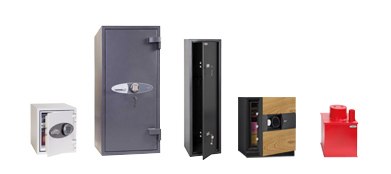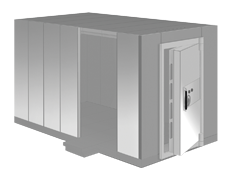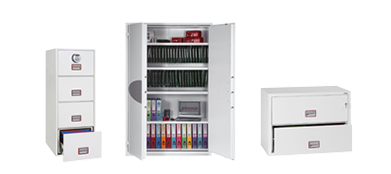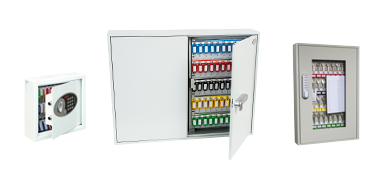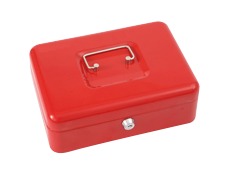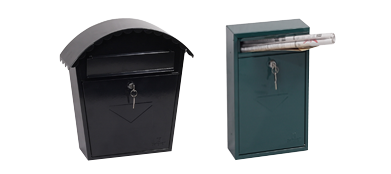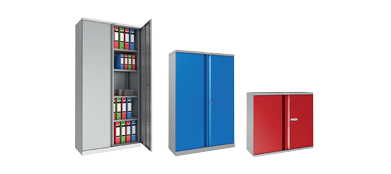What is a fire safe?
A fire safe is designed to protect your valuables from heat damage and smoke caused by fire. The level of protection is determined by the type of fire safe and its fire rating.
Most safes provide some security against fire, but the level of protection will vary depending on the construction of the safe. A fire safe can be used to store personal items, such as jewellery or important documents which cannot be replaced by cash alone. Storing such items in a fire safe provides peace of mind with the knowledge that they are safe from fire as well as burglary.
Fire safes protect paper, digital media and magnetic media. The inside of the safe needs to be below the temperature at which they will combust. This is done by having insulation lining the safe. As a consequence the walls are thicker and the interior space can be reduced. We recommend checking the interior dimensions of a fire safe are adequate for your needs prior to purchase.
Fire safes are sometimes referred to as fire chests or fire cabinets.
What types of fire safe are there?
There are essentially two types of fire safe: fire safes for data and fire safes for paper.
What is a fire safe for data?
Fire data safes are suitable for storing tapes, CDs, DVDs, USB sticks, hard drives, film negatives. Data requires greater protection than paper as the media can melt or become corrupted at a lower temperature.
The fire test standards below require that the critical maximum temperature of the following media cannot be exceeded:
- Digital media: 120˚C
- Computer data: 52˚C
What is a fire safe for paper?
Fire paper safes are suitable for storing important paper documents such as birth certificates, wills, house deeds, contracts, business documents.
The fire test standards require that the critical maximum temperature for paper is 175˚C.
Can I store digital media in a fire safe for paper?
No, electronic media melts at a lower temperature than paper combusts. As a result a fire safe for paper which has a maximum temperature of 175˚C is unsuitable for storing electronic media in the event of a fire. If you wish to store some electronic media in a paper safe one option is a data combi safe.
What is a data combi safe?
A data combi safe is a fire safe for paper which contains a compartment with additional insulation for storing data items. For example, the Phoenix Datacombi DS2501K is a fire safe for paper, with a compartment for data and a cash rating of £2,500 or £25,000 for valuables.
Can I get fire safe inserts for safes?
Yes, Phoenix produce fireproof inserts to keep data safe from fire within a security safe. For example, we have the Phoenix FSDP103.
Can I get a waterproof fire safe?
Phoenix produce the Titan Aqua range of fire safes which also offer protection from water. In the event of a fire, sprinkler systems or hoses can release significant amounts of water. A waterproof safe can offer protection for paper and data items in this event.
What are fire ratings for safes?
The fire rating of a safe describes the level of fire resistance. There are three parts to the fire rating test:
- Explosion hazard test – simulates a safe being suddenly subjected to extremely high temperatures. This tests whether the safe will burst apart in an explosion.
- Fire endurance test – exposes a safe to high temperatures over a period of time. This test is performed by placing the safe in a furnace and monitoring its internal temperature.
- Fire drop test – replicates the effect of a safe falling through a burning building.
Phoenix use a range of standards, including the NT Fire test specifications which originate from the European NordTest standards
NT Fire 017-60 Paper – Requires safe to be heated to 945°c for 1 hour. The maximum temperature inside the cabinet shall not exceed 175°c.
NT Fire 017-90 Paper – Requires safe to be heated to 1050°c for 90 minutes. The maximum temperature inside the cabinet shall not exceed 175°c.
NT Fire 017-120 Dis (for data) – Requires safe to be heated to 1090°c for 2 hours. The maximum temperature inside the cabinet shall not exceed 52°c.
NT Fire 017-120 Paper – Requires safe to be heated to 1090°c for 2 hours. The maximum temperature inside the cabinet shall not exceed 175°c.
The EN 1047 Fire Test is another European standard which Phoenix uses, specifically the EN1047-120 Dis for data. This requires safes to be heated to over 1100˚C for 2 Hours. Internal temperatures shall not exceed 52˚C. The data safe must remain in the furnace to cool, while other tests allow the safe to be removed. The test also involves a 9 metre drop test to replicate falling through a floor during a fire. Magnetic and radiation contamination is also tested to ensure data cannot wiped from tapes or hard drives.
LPS 30P, LPS 60P – EN 15659 – Light Fire Resistance where the internal Temperature will not exceed 175˚C.
GB16810-1997 – Requires the safe to be heated to 945˚C for 1 hour. The Maximum temperature inside the cabinet shall not exceed 175˚C.
MTS DIP 120-60DM (Grade B) – Digital Media fire protection where The internal temperature will not exceed 120˚C.
Size of fire safe
Due to the thickness of the doors and walls, safes are smaller on the inside than they appear on the outside. This is particularly true of fireproof safes where fire-resistant materials are used in the casing. Always check the internal measurements of a safe are adequate for your needs.
It’s often worth getting a safe with more storage area than you currently require as you may wish to store more items in the future.
Will a fire safe reduce my insurance premiums?
Fire ratings are used by insurance companies to assess the degree of security for items they cover. The higher the rating, the more secure your items are considered to be and this can reduce your insurance premiums.
How secure is a fire safe?
While all fire safes come with locks, fire safes are designed to protect the contents from fire and this is separate to the security rating for the value of the contents.
Be sure to check the security rating of the safe. This is used to check if your insurance will cover the safe contents and uses a series of cash ratings. For example, a £1,000 cash rating on a safe will cover you for £1,000 in cash or £10,000 in valuables.
What types of lock are available for fire safes?
A full range of locks are available for our fire safes. The types of lock available are:
- Key lock – The traditional method with no danger of batteries running out. The risks are in losing the keys and in ensuring the keys themselves are kept in a safe place. We can supply replacement keys for most Phoenix models, though be sure to check if replacement keys would be available for your model. To obtain replacement keys we would require proof of purchase in the form of a copy invoice, delivery note or details of your registered guarantee as well as the key number.
- Electronic keypad – A pin code is entered to open the safe. You can change the pin code as often as you like. A low battery warning lets you know when to replace the batteries. The risks are in forgetting the code.
- Fingerprint – Phoenix safes use biometric security in the form of a fingerprint which is initially scanned in during set-up and confirmed. To open the safe, press the finger against the scanner and open the safe door. The Phoenix fingerprint lock can store up to 128 different fingerprints. Fingerprint locks also require batteries and a low battery warning lets you know when to replace the batteries.
- Dual lock – This is where two key codes are required to open the safe. On a Phoenix safe, the user will type in the first code and press Open, then type in the second code and press Open. This can be useful when you wish to have two people required to open a safe. The two people can have a code each.
- Changeable lock – A changeable lock is one which can replaced if required without damaging the safe. If a lock becomes damaged or compromised, it can be replaced without the cost and inconvenience of replacing the whole safe.
Installation of a fire safe
Many safes are installed with bolts securing them to a floor or wall. Bolts running through the safe wall can adversely affect the fire protection and this should be checked via the fire rating.
Remember to check the flooring when deciding where to fit a fire safe. A wooden floor or floor supported by wooden beams may be susceptible to fire. This is why many fire safes are given a drop test, to ensure they remain secure if they fall through a burning building.


 USA
USA ES
ES DE
DE FR
FR